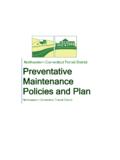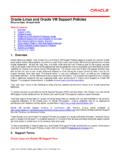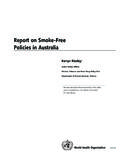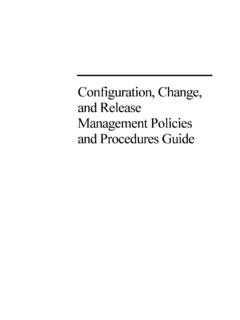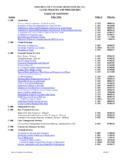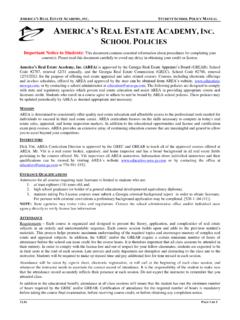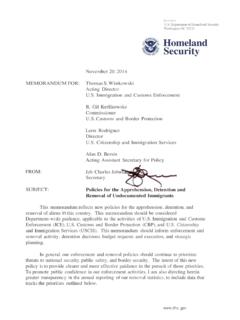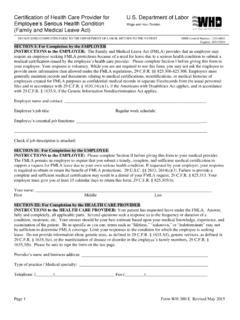Transcription of CHAPTER 3: STANDARD FIRE POLICY, …
1 3-1 CHAPTER 3: STANDARD fire policy , HOMEOWNER AND DWELLING policies Let s STANDARD fire policy The STANDARD fire policy (SFP) was first used in the New York in the beginning of the 20th century. It s design was structured so well, it soon became the model for Personal and Commercial Property Insurance for all other states. In California, the policy is referred to as the California STANDARD Form fire policy . According to the California Insurance Code, all fire policies on subject matter in California shall be on the STANDARD form, and except as provided by this article shat not contain additions thereto. No part of the STANDARD form shall be omitted therefrom except that any policy providing coverage against the peril of fire only, or in combination with coverage against other perils, need not comply with the provisions of the STANDARD form of fire insurance policy or Section 2080, provided, that coverage with respect of the peril of fire , when viewed in its entirety, is substantially equivalent to or more favorable to the insured than that contained n such STANDARD form fire insurance policy .
2 (CIC 2070) The STANDARD fire policy is the only insurance policy to have its wording standardized by law. With the introduction of modern property insurance, the STANDARD fire policy has become obsolete; however, it still provides a foundation for Dwelling Insurance, Homeowners Insurance, and many other types of insurance used today. 3-2 SFP Covered Perils The SFP only covered direct loss from the perils of fire , lightning, and removal from premises. The following is a brief description of each of the perils covered under the STANDARD fire policy . fire : defined as combustion sufficient to produce a spark, flame, glow or incandescence. There are two different types of fire , described by the courts: 1. Hostile fire : a fire becomes hostile when it was not started intentionally, or has escaped from the confines in which it was intended. Example: An ember from a fireplace starts a living room on fire 2. Friendly fire : a fire that is intentionally started and burns within the confines for which it is intended.
3 Example: A fire burning in the fireplace NOTE: ONLY HOSTILE fire IS INSURABLE Lightning: defined as the natural discharge of electricity from the atmosphere and does not include artificially generated electricity such as from an electrical power surge. Removal: this provides insurance to property while it is removed from the residence premises to protect it from a covered peril. For instance, if furniture wasn t damaged in a home fire and was stored at a neighbor s garage, then stolen from the garage, the insurance will apply to the insured s property due to theft. Homeowners policy One of the most common types of insurance sold in the is the Homeowners policy . Homeowners Insurance is sold to residential property owners to provide both property coverage and liability coverage related to the home and its use. ISO has recently revised the STANDARD program, now called HO 2000. Homeowners Insurance Insurance companies use six different types of policy forms to provide homeowners insurance.
4 SEE CHART ON NEXT PAGE 3-3 Form HO-1 Basic HO-2 Broad HO-3 Special HO-4 Tenant Broad HO-3 & HO-15 Comprehensive HO-6 Condo Broad Sec. I Property A. Dwelling B. Other Structures C. Personal Property D. Loss of Use Additional Coverage Including Removal Perils: Recovery Replacement cost A & B All other prop. ACV $15,000 min 10% of A 50% of A 10% of A Removal for 30 days; Cost for reas. repairs; fire dept. service fees; Lawns, plants, shrubs Debris removal fees; Credit card fund transfer card, forgery, & counterfeit money cov.; Breakage of glass; Landlord furnishing 30 days fire , Lightening, EC, VMM, Theft, Volcano $15,000 min 10% of A 50% of A 20% of A Same as HO-1 plus Collapse of building 30 days Same as HO-1 plus Falling objects; Weight of ice, snow or sleet; Accidental discharge of water; Sudden tearing apart of heat, A/C, hot water system; Freezing.
5 Artificially generated electrical current $20,000 min 10% of A 50% of A 30% of A Same as HO-1 plus Collapse of building 30 days All Risk for Dwelling and Structures Broad Form Perils for Personal Property $6,000 min 20% of C Same as HO-1 plus Collapse of building Building additions & alterations 30 days Broad Form Perils for Personal Property $30, 000 min 10% of A 50% of A 30% of A Same as HO-1 plus Collapse of building 30 days All Risk for Dwelling and Structures All Risks for Personal Property $1,000 flat $6,000 min 40% of C Same as HO-1 plus Collapse of building 30 days Broad Form perils for Dwelling (condo fixtures) Broad Form for Personal Property (ACV Cov. A) 3-4 Eligibility Homeowners policies are issued to cover a premises that is used principally for private residential purposes.
6 Some incidental business occupancies, such as a studio or office, are permitted. However, if the insured operates a business from the insured s home, the insured probably will need a separate business policy or at least an endorsement, which is an add-on that provides expanded coverage to the insured s basic homeowners insurance. A homeowners policy cannot be issued to cover any property situated on premises used for farming purposes. An insurance company can issue homeowners form HO-2 or HO-3 to the insured if the insured qualifies as any of the following: an owner-occupant of a dwelling; the intended owner-occupant of a dwelling in the course of construction; one co-owner of a duplex, when each distinct portion of a two-family dwelling is occupied by separate co-owners; a purchaser-occupant when the seller retains title under an installment contract until payments are completed; and an occupant of a dwelling under a life estate arrangement, when dwelling coverage is at least 80 percent of the current replacement cost.
7 If the insured is a co-owner, a purchaser-occupant or an occupant under a life estate, the owner or remaining co-owner also will have what the insurance companies call an insurable interest in the dwelling, other structures, premises liability and medical payments coverage. This interest can be insured by attaching an Additional Insured Endorsement to the insured s policy . However, that co-owner s personal property will have to be insured separately, on another policy . Mobile homes also qualify for coverage under an HO-2 or HO-3 form, but only when a mobile home endorsement is attached to the policy , which alters certain provisions. To be eligible, a mobile home must be designed for year-round living, and it must be at least 10 feet wide and at least 40 feet long. Mobile homes also may be covered with separate, stand-alone insurance policies . Typically, homeowners form HO-4 is used for renters, form HO-5 provides open perils coverage on both building and contents, and form HO-6 is used to insure a co-op or condominium.
8 Form HO-8 is a variation on HO-1 that is available in some states. In the rest of this CHAPTER , we will focus on the typical homeowners policies : HO-2 and HO-3. Insured Location and Residence Premises Residence premises Newly acquired residence Secondary residence described in the Declarations Nonowned temporary residence (vacation home) Vacant land (other than farm land) the insured owns or rents Land in the course of construction of a residence intended for the insured Insured s cemetery plot Premises occasionally rented by insured for a non-business purpose (social event at a local hotel, for example) 3-5 Property Coverages A homeowners policy includes a number of different coverages, which provide a sort of loose checklist of the kinds of exposures the insured may face: Coverage A Dwelling coverage is the most significant. This coverage applies to the house itself, attached structures (such as an attached garage), and materials and supplies on or adjacent to the premises.
9 This includes materials used for repair or construction. A homeowners policy will show a specific amount of insurance for the dwelling. This will be an amount separate from liability or property coverage. Dwelling coverage also is sold separately. Because these stand-alone policies don t cover liability or other risks, they are best used in addition to a STANDARD homeowners policy for second homes, vacation condos, etc. Note: Some state-run home insurance plans are dwelling-only coverage. Coverage B Other structures coverage is also included. It applies to buildings on the premises that are separated from the house by a clear space, or connected only by a fence, utility line or similar connection (such as a detached garage or work shed, or even a guest house). The STANDARD amount of insurance for other structures is 10 percent of the amount written for the dwelling coverage, and it is provided as an additional amount of insurance. (In other words, if the insured have a $200,000 policy for the dwelling, the insured automatically get an additional $20,000 of coverage for other structures.)
10 If 10 percent isn t enough, the insured can buy more other structures coverage. Coverage C Personal property coverage is another key component of a homeowners policy . Personal property means just about any household possession that s financially valuable from an earring to a refrigerator. This coverage applies to personal property owned or used by the insured or anyone else covered under the insured s policy while it is anywhere in the world. It also includes coverage for theft. At the insured s request, other people s personal property also may be covered while it is on the insured s premises. This coverage usually is an additional amount of insurance above the policy s face 50 percent of the amount written for the dwelling. If that s not enough, the insured can increase the limit and the insured also can choose to decrease. Personal Property coverage applies in many situations including when things are stolen from the insured s car while the insured is traveling.

